





In India, crafts have a lot of potential for increasing employment and reducing poverty. A lot of the rural population rely on handicrafts as a source of income. Producers of crafts frequently use intricate forms of knowledge and abilities that have developed over a long time period.


• While some of the issues are caused by the shifting nature of consumption, others by the social and economic difculties faced by craft groups.
• The precise percentage of sales that go to the artisan cannot be calculated since it is closely guarded by the several tiers of intermediaries and dealers that the goods must pass through.
• The bulk of Indian craftspeople face signifcant challenges when trying to access, comprehend, and modify their items for new markets.

In March 2000, the Director of the Museum Shop at the Smithsonian’s FreerSackler Gallery, Martin Bernstein, visited Jodhpur. At the showroom of Lal-ji, one of Jodhpur’s most successful dealers, he saw shelves full of decorative brass globes on stands. The local wholesale price was quoted at Rs. 200 (US$4.50), and probably could have been brought down to US$3.50 with hard bargaining for quantity purchases. One assumes that these pieces are made in Lal-ji’s workshop and that the crafts producers are paid by the day. If Lalji is wholesaling these pieces for US$3.50, the craftsman’s payment per piece could not work out to more than US$1.00, and probably to much less. Mr. Bernstein was very interested in these pieces, since he had seen them on display at the showroom of a New York-based distributor (whom, we later learned, is one of Lal-ji’s clients). This distributor was ofering the pieces in New York at US$25 to 30.


• Crafts producers who have lost their conventional markets frequently are not aware of potential new customers for their items, both in urban India and overseas due to lack knowledge about and access to resources
• Since there is hardly/ no direct connection between the makers and the consumers, the goods pass through middlemen who pay pennies on the dollar to the artisans.
• Craftspeople have access to a number of credit schemes, mostly through government institutions, but it can be challenging for an artisan to comprehend and use these programs.
• These secrets of the trade are extremely informal and closely guarded and considered a part of the family/communities heritage. This often means they are not shared outside their community and the younger generations of these communities are opting to not take up the crafts resulting in the lost of these traditions.

• Provide knowledge and access to resources that help in production, quality and skill development.
• Provide direct access to new markets.
• Provide a working capital to maximise production and while not hampering the daily life of people.
• Formalise knowledge sharing to avoid loss of skill and traditions.

How to bridge the gap between the artisans/ crafting communities and consumers?

This is where Bindu comes in

It promotes sharing, inclusion, co creation and builds conversations and dialogues.
It eliminates the middle man so that the craftspeople can sell their work directly into the market. This in-turn creates a dedicated and loyal fanbase who actively support and invest in the community of craftspeople.
It is also a platform to give voice to the community where NGO’s, trade unions and experts from the felds come together to bridge the gap between the craftspeople and the government.
Since many of these crafting techniques are passed down from one generation to the next, Bindu also strives to share the knowledge of the crafts so that they dont die with the new generations not wanting to learn the skills.
Finally it also hosts fairs much like the where there are talks and symposiums to discuss the future of the crafts, brining together the whole community in one place.

The 2 palms coming together symbolisms connection, brining together people from all over the world.
Bindu literally translates to a Dot, symbolizing the focal point of all creative energies, unity and harmony

Bindu as an organization is present in a country on various levels- from Global to Local. It is a network connecting not only buyers but also designers and other craftspeople from across the globe. On a national level it facilitates a conversation between the craftspeople and the government while on a state level it holds fairs and symposiums bringing together not only crafts and craftspeople but also anyone interested in them from across a country. From there on it reaches the smallest of the nooks and crannies of a country through the villages where these craftspeople practice. Hence the communication for Bindu is not only to the world but also to these villages trying to make them understand the benefts of being a part of the organization.

Website
The main channel for Bindu to reach on a global level is through its website. The website works in multiple folds according to the craftspeople or the consumers need.



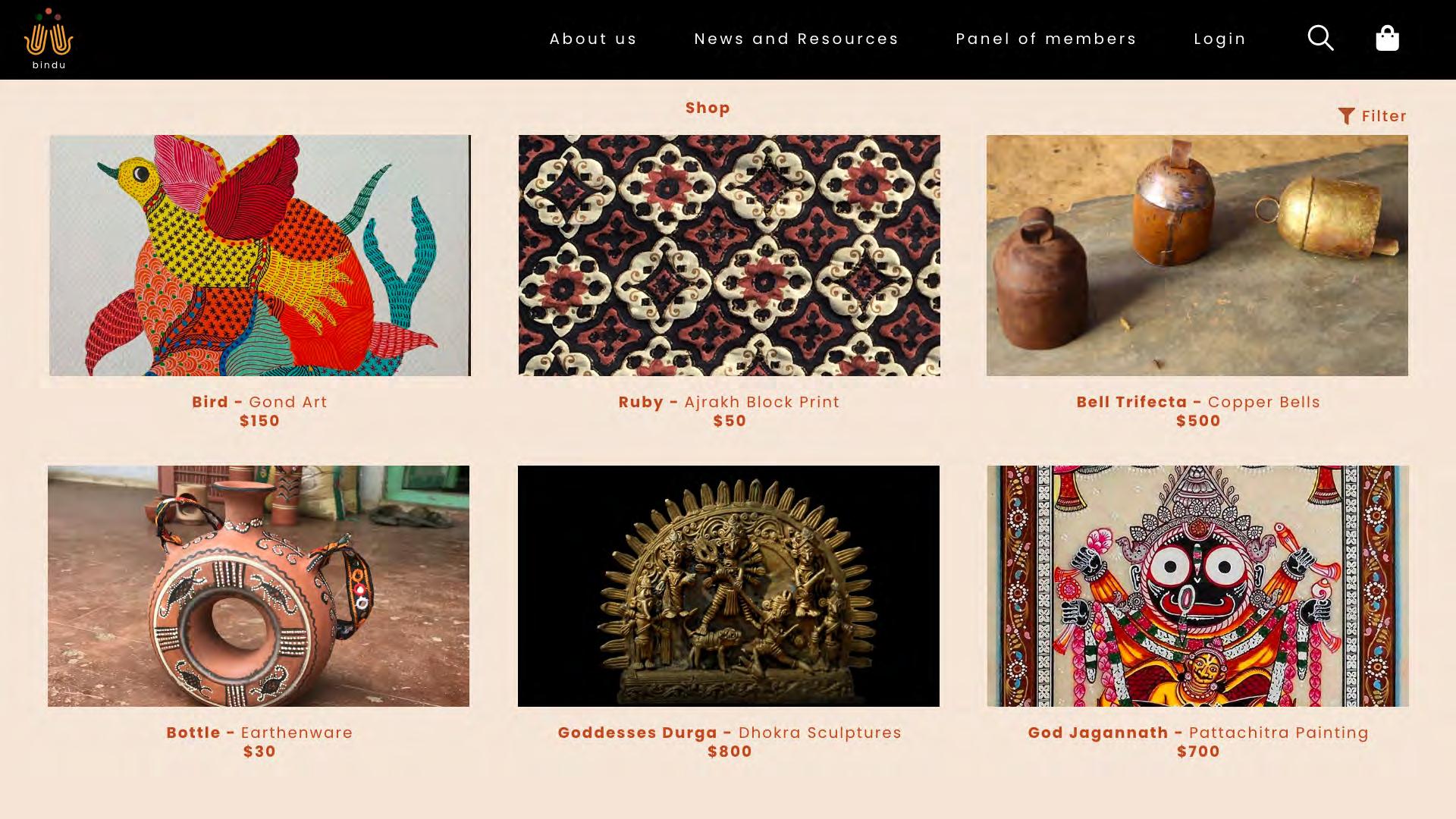
First and foremost, it acts as an e-commerce website where the craftspeople can directly list their works for people to buy.



It also is a database for various craftspeople from across the world to connect with one another and with other people and designers, prompting possible collaborations.

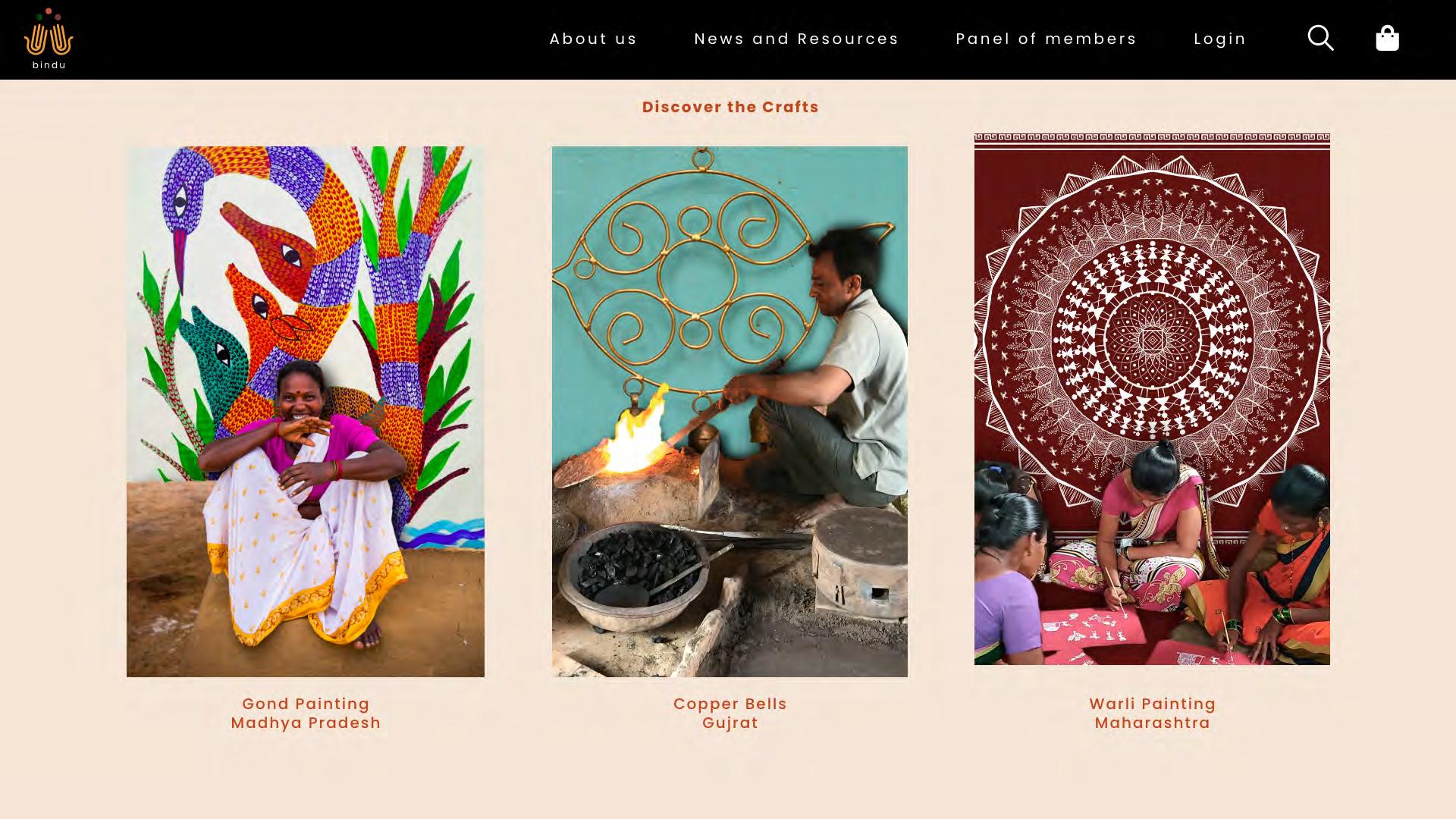
It works as an archive for various craft forms of the world allowing anyone to know more about them and connect with the artisans and if interested learn the techniques.

Since Bindu is a new organization, one of the best ways to grab the attention of the people is through Out of Home advertisements, talking about the organization, diferent craft forms and why should people become a part of it.

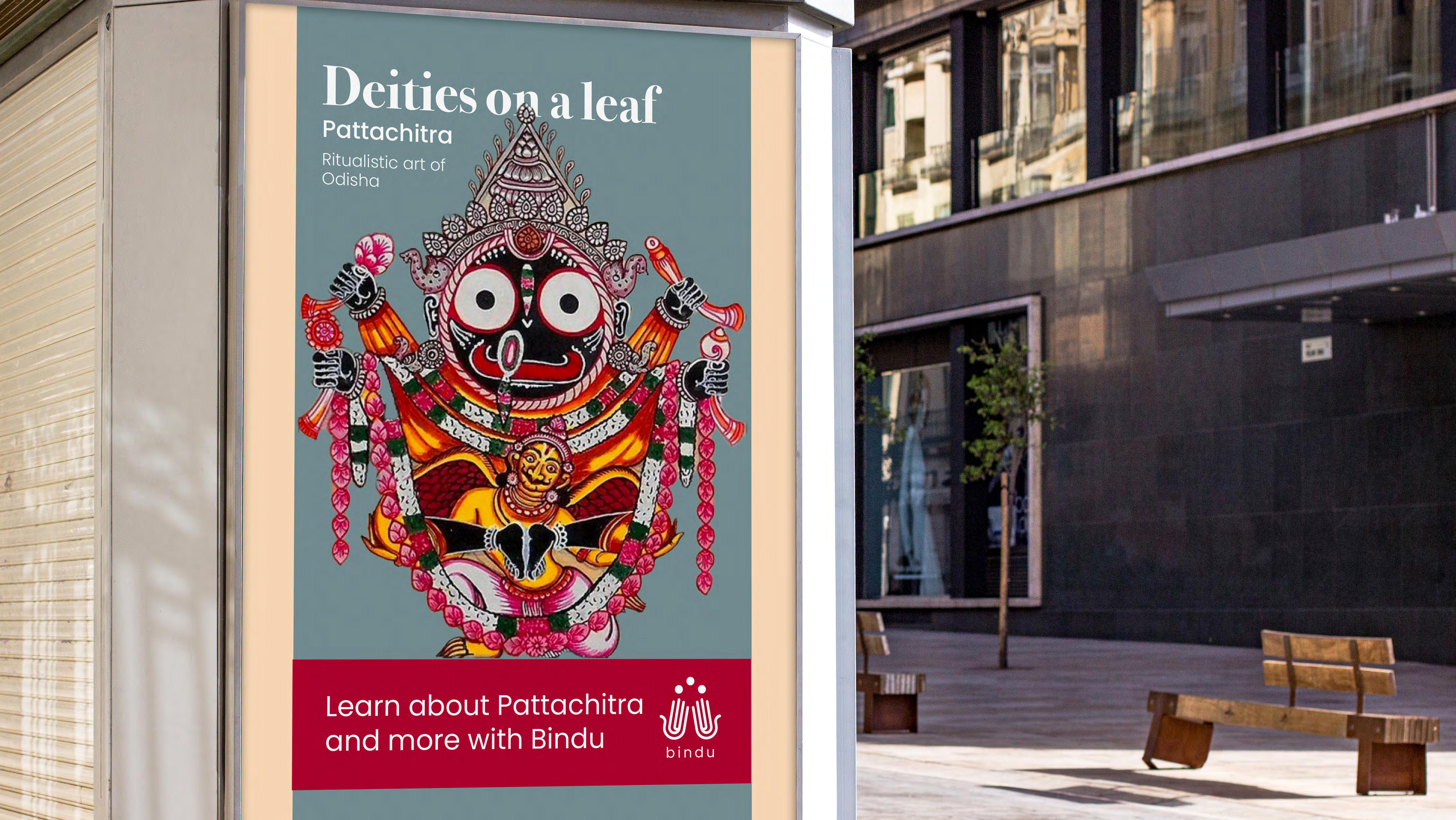





In todays time, social media has the widest reach in the least possible time.






Bindu proposes to host fairs to encourage a conversation between artisans, designers and all craft lovers. The main aim of these fairs would be to display works from various parts of the country, build networks and foster conversations.

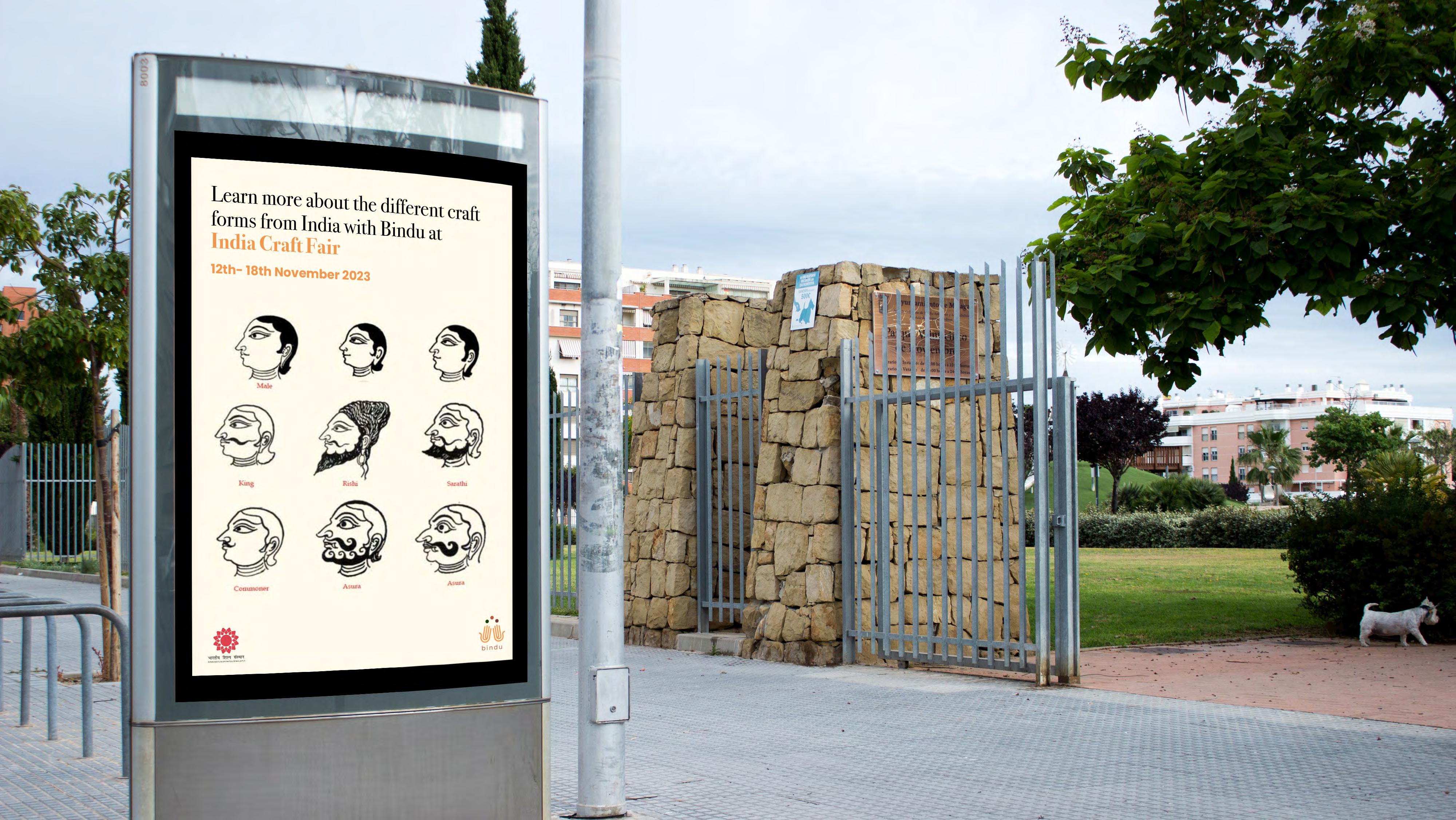

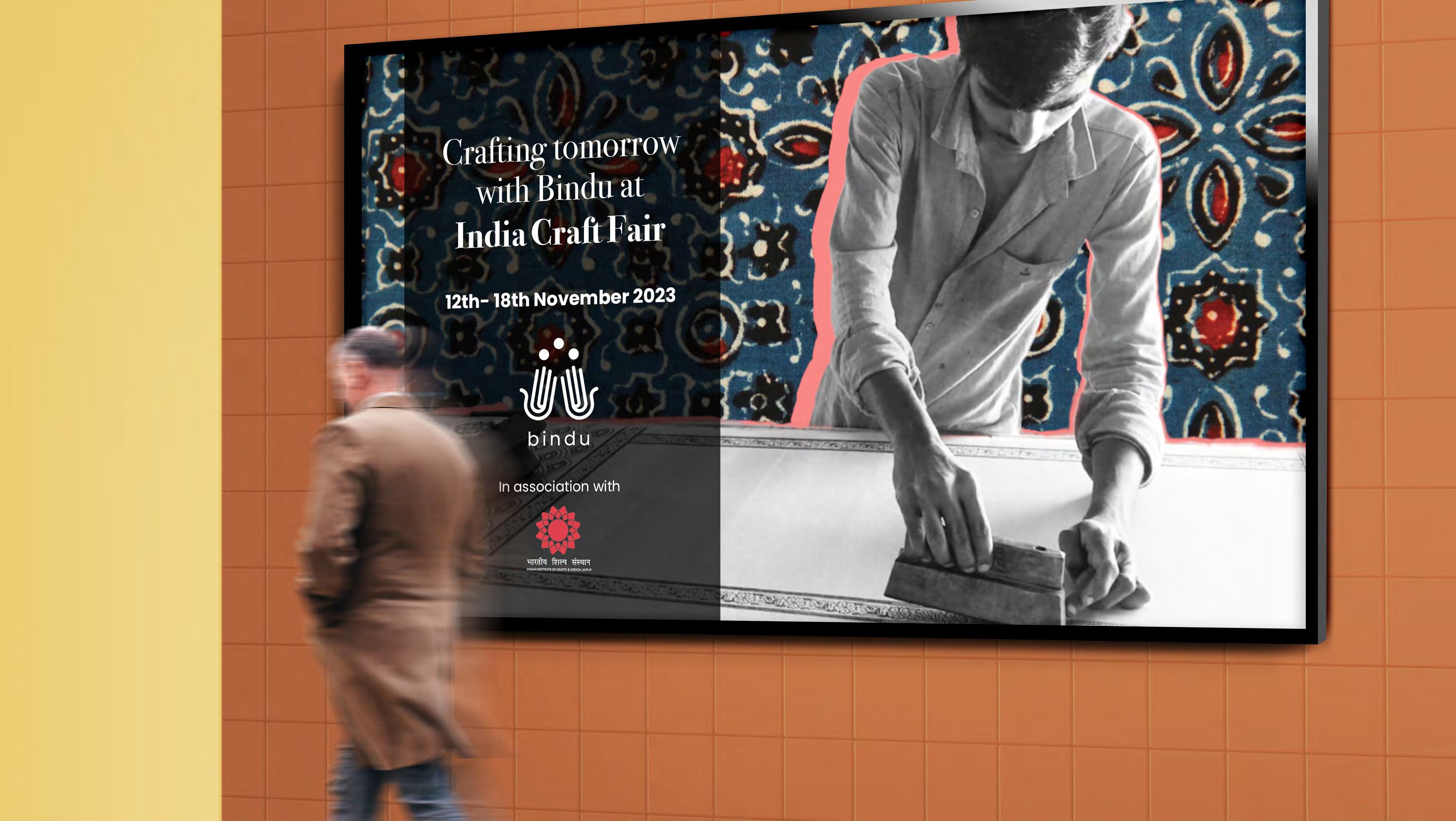



The district level is only a temporary level through which Bindu connects to the villages. The District level is governed by a government ofcer to whom all the head of Villages report. Through the civil servant, Bindu would get in touch with the village heads, reaching the villages.
At the village level, Bindu would be communicated in the regional languages with the help of the village heads. There would be fyers handed out, posters and paintings on the walls and a Digital Bard who would go to each village and talk to people about Bindu. Once a craftsperson joins Bindu they get an account on the website which they can use as per their convenience









Thank you